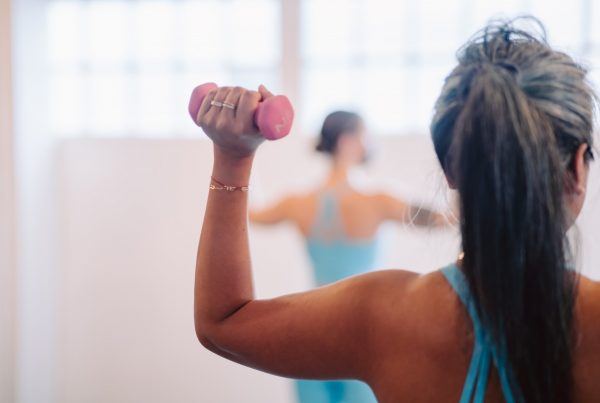As we head into the end of 2024 and look forward to a new year, it’s time to consider New Year’s resolutions. Like millions worldwide, you’re most likely already starting to think about creating better health habits in 2025. Having said this, anyone who’s ever struggled to stick to a diet or go to the gym three times a week knows how difficult it can be to build a new habit or adjust an existing one. Even though science and common sense tell us that lifestyle changes can be the difference between suffering from serious health problems and enjoying our later years. If you’re keen to improve your healthspan, then keep reading.
A Guide to a Healthier 2025
What to expect from this article
- We’ll show you why you’re not alone in setting healthier resolutions and why it counts to keep setting goals. Hang in there!
- This article will provide inspirational links about people like you and me, who are living proof you don’t have to be young to start establishing healthier habits. Yes, you can create better and more sustainable habits in the New Year.
- We’ll provide a practical toolkit to help change your longevity outcomes in 2025. Live happier, healthier for longer!
How will you change your habits in 2025?
Did you know the top three resolutions consistently for millions of people globally over the past decade have been health, wealth, and personal growth? It shows we’re pretty good at being habitual with our intentions anyway!
No doubt 2025 will be pretty similar, if not the same.
You can change your life starting now!
When it comes to establishing healthier habits, we can all learn some great advice from Adrian Gore, the founder and chief executive of the successful global healthcare group, Discovery. Gore is an exceptional businessman, leader in healthcare and walks the talk when it comes to longevity.
“Healthy habits can profoundly extend the quality and length of life.” He bases that statement not only on his personal experience, but on a 10-year analysis of health habits performed by Discovery’s Vitality Group International, in partnership with the London School of Economics.
The data was derived from over one million Vitality members in South Africa and the UK. This is a massive study!
Describing the project as “a comprehensive analysis of how people form and break habits for better health”, it shares the findings and a report covering the major points. While some of the statistics are shocking, there are also some really positive insights.
It’s never too late to improve your health and extend your life.
Even simple changes, sustained over time, can have a significant effect on longevity. That’s especially true in our later years.
A case in point. We recently interviewed Kenneth Scott, an 81 year old biohacker who has the biological age of an 18 year old. I met Kenneth at the Longevity Summit Dublin earlier this year, where he was a guest speaker. He’s living proof that it is never too late to desire ultra longevity. Kenneth is one of the most optimistic and energetic people I have ever met. If you missed this article on our website, then loop back once done reading this article and click here:
Kenneth Scott: The 81 Year Old Longevity Biohacker With A Biological Age of 18

Kenneth Scott before his morning jog
We’ve also been interviewing a few other biohackers from around the world. Each demonstrates a commitment to healthy habits. They are also proof that you don’t have to be rich or a rocket scientist to be able to bio hack your own health outcomes.
Inspiring stories from ordinary people
Julie Gibson Clark is a single mother of two and another great example we can all live by. She calls herself a “reluctant biohacker” and has established her own set of health habits.
Julie Gibson Clark: 5 Ways To Age As Slow As Bryan Johnson On A Budget

Julie Gibson Clark soulsimage/instagram
Establishing sustainable habits is key to your success in health (and everything else actually)
Back to the Discovery report. The study also shows that you don’t have to be young to save your health and longevity. You can start right now!
According to the report, “People aged 65+ who formed and sustained a habit of doing physical activity three or more times a week for three years saw a 52% reduction in their mortality risk.”
These 4 Lifestyle Behaviors Can Kill You
It’s important to be reminded that certain behaviors at any age are really going to harm you. The authors of the report identified four lifestyle behaviors accounting for an estimated 70% of deaths worldwide:
- Physical inactivity;
- Poor diet;
- Excess alcohol; and
- Smoking.
They also point out that 30% of the global population is inactive and 1.5 billion people are predicted to be obese by 2035. The numbers are staggering, and our healthcare system is struggling to cope.
The obvious solution is to change our habits. But if you’ve ever tried to get up half an hour earlier to meditate, you know that making lasting lifestyle changes can be a challenge.
How To Set the Right Goals
It all starts with your willingness to change. Before you decide which habit to work on, you need to make sure you’re working towards the right goal.
Identify the benefits that you care about. If your doctor tells you to lose weight, think about how that could improve your life.
Sure, you may lower your risk of lifestyle diseases, but does that give you a sense of urgency or something to look forward to? Think about it.
Change a habit that matters to you now!
- If heart disease runs in your family, you may want to lower that risk.
- If you don’t like the way you look in the mirror, seeing a thinner version of yourself might feel good.
- If you’re feeling tired, having more energy for your favorite activities could be the incentive you need.
- These are more compelling and logical way of approaching change.
Create Atomic Habits
According to James Clear, author of the best-seller Atomic Habits, behavior change consists of three layers: outcome, process and identity.
The outcome is the result you want. The process is the habits you engage in to get it. Identity is about how you see yourself and the world, and what you believe.
Clear believes that real change begins at this level.
Law #1: Make it obvious
A cue triggers our brains to initiate a specific behavior. Basically, it’s information that predicts a reward. For example, if we see an advertisement promising more efficient advertising software, our brain is triggered by this cue to look into the product. Understanding cues helps us see our habits clearly, as well as identify obvious cues for triggers we want to change.
Seeing patterns in our lifestyles can also lead to easily making small shifts or adding habits where they are the most obvious. For example, if you make coffee the second you wake up every morning and a new habit you want to implement is to start meditating more, you can associate making coffee with meditating. Flip on your coffee machine and meditate for five minutes before pouring yourself a mug of coffee.
One of the best ways to build a new habit is to identify a current habit you already do each day and then stack your new behavior on top. This is called habit stacking. Habit stacking is a special form of an implementation intention. Rather than pairing your new habit with a particular time and location, you pair it with a current habit or an entry point.
Law #2: Make it attractive
Cravings are the key to the second law of the habit loop, and they are the motivational force behind every habit. As Clear notes, without some level of motivation or desire – without wanting a change – we have no real reason to act.
One of the keys to making habits attractive is to design your environment based on the changes you want to make. For example, if you want to make a habit of networking with your peers more, place event reminders on your calendar, so you receive the notification before leaving work each day. The key is to make your environment a positive force for change.
Law #3: Make it easy
There’s a reason New Year’s Resolutions are given up by the second week of the year – making drastic lifestyle changes is hard to keep up with. Instead, opt for easy, marginal changes that you can continue day after day until it becomes a habit.
There are a few key moments in your day that can determine the trajectory of the rest of your day. And most of the changes that we want to make can be put into motion in just two minutes. Clear presented his “Two Minute Rule,” with the idea that “when you start a new habit, it should take less than two minutes to do.”
The idea is to make your habits as easy as possible to start. Once this is set in motion, chances are you’ll find yourself on the path to positive change.
Law #4: Make it satisfying
If the ending is satisfying, we have a reason to repeat the behavior – so the “reward” is a very crucial part to creating good habits. However, for many long-term positive habits, change can take time to see. For example, if your goal is to cut business costs, after a week you might not see an increase in profitability, but you will by the end of the year.
Clear encourages us to create a visual trigger that can help motivate you to perform a habit with more consistency. For example, using a habit tracker can help keep us motivated by visually tracking progress.
A habit tracker can come in the form of an app, a simple notebook, or moving paperclips from one pile to another.
Seeing progress is satisfying, and visual measures provide clear evidence of your progress. As a result, it can help reinforce your behavior and add a little bit of immediate satisfaction to any activity.
Once you’ve set your goal, ask yourself this:
- “Who is the type of person that could get the outcome I want?”
- If you want to lose weight so you’ll have more energy, what type of person can achieve that? If your answer is “Someone who’s active!”, then you can start with physical activity.
- If you think eating right is more important, then you must begin there.
This is how you prove to yourself that you are (or are becoming) this kind of person.
Says Clear: “You can’t rely on being motivated. You have to become the type of person you want to be, and that starts with proving your new identity to yourself.”
How habits work
Before we look at the best way to make changes, we need to understand how habits are formed. We lay the foundation for a habit by performing an action.
Often this is a conscious process, but it doesn’t have to be. When we repeat the action over time, possibly adding supporting actions, it becomes a behavior.
With enough repetition, that behavior becomes automatic. Now it’s a habit.
This is the process for all habits, regardless of their nature.
Habits range from strong to weak, and good to bad. For example, the Vitality team classified exercising three or more times a week with high consistency as a strong good habit. The same exercise performed inconsistently was considered a weak good habit. Consistently failing to exercise at least twice a week was classified as a strong bad habit.
The type of habit matters
As you can see, consistency is the key to habit strength.
This is important to know, because strong habits last much longer than weak ones. Despite the extreme disruption of COVID-19, many Vitality members maintained or even improved their habits, with only a 24% decline in good habits.
But the type of habit that made all the difference. Only 69% of the strong good habits were maintained, while the same could be said of only 33% of the weak good habits.
Creating sustainable habits with habit laddering
According to the data collected, most Vitality members took between seven and 15 weeks to form a strong habit from scratch, with the majority requiring nine to 10 weeks. That’s over two months, which is longer than many people will persevere. Fortunately, the Vitality report includes a simple process that makes it easier to sustain habits.
3 habit laddering take outs that will get you results
The foundation of this process is something the authors call “habits laddering”. It consists of three steps:
- Set a target: Your goal should be achievable based on where you are now. For example, someone who’s not physically active might struggle with the goal of 10 000 steps five days a week. 2 500 steps three times a week would be a more realistic place to start. If you’re upgrading your diet, you might start by eating more vegetables or cutting back on sweets on certain days of the week.
- Start small: Choose an activity that’s easy and practical, and do it consistently (maybe three times a week). When you’re ready, increase the frequency, but not the intensity. If you’ve been eating a healthy lunch and going for a walk three days a week, add another day. For the first six to eight weeks, focus on consistency, and slowly increase the frequency.
- Repeat, then intensify: When you’re ready, gradually increase the intensity of your activity. That could mean walking faster, further, or both. If you’re counting steps, don’t increase your daily average by more than 800 steps per week. If you’re eating a healthier lunch, this could be the time to eat that way more often or find even healthier options.
Starting out
The key is to start small. Too much intensity too soon makes us more likely to give up. The data shows that Vitality members who formed the habit of walking 5 000 steps three times a week maintained that habit 50% longer than those who started exercising with high-intensity workouts. The results also demonstrate that maintaining a small amount of physical activity has lasting health impacts, regardless of age, risk factors and health status.
Do you have to walk 10 000 steps a day?
While the Discovery Vitality study involved both nutrition and physical activity, some of the most interesting data relates to walking.
Many people who want to get fit aim for 10 000 steps a day. It’s the magic number we’re all familiar with, presumably determined by experts after years of research. But that number didn’t come from science. Its origins lie in a Japanese device called a manpo-kei, which translates to “10 000-step meter”. So, 10 000 is just a number made up by someone to sell pedometers!
In search of a more useful target, Vitality studied data from more than 600 000 members who recorded their steps between 2017 and 2019. As you’d expect, increasing the number of steps decreased mortality.
They found that the sweet spot was between 7 500 and 8 000 average daily steps. After that, increases yielded only marginal returns. When they looked at members aged 65 and older, that number decreased to 6 400.
The bottom line is though, if you’re between 45 – 65. years, research has shown that if you can achieve 10 000 steps just three times a week, then you can reduce your Type 2 diabetes risk by 41%, reduce your stage 4 cancer risk but 36%
And those who took 10 000 steps five times a week for two years decreased their Type 2 diabetes risk by an impressive 57%.
All habits start somewhere
If counting steps doesn’t appeal to you, don’t worry – there are plenty of healthy habits to choose from. You can increase your physical activity by taking the stairs, walking your dog, gardening, going for a swim or a bike ride, working out with a friend, or anything else that gets you moving.
There are also plenty of ways to eat better, reduce your stress and improve your sleep. The important thing is to start somewhere, with something that feels manageable and right for you.
You can create healthier habits!
If you got to the end of this article, then clearly you are committed to living better and longer. Bravo! We want to help you optimize your health.
Download The Longevity App and boost your healthspan
If you want to change your habits, tracking your daily activities is extremely helpful. We have just launched The Longevity App on the i-store. This easy to use platform is powered by Viva Score and developed by Alula Health. The app provides anyone with daily access to key health indicators. It’s so easy to download and follow. Best of all, it is completely free to you in this phase of the launch. First on Apple, with Android to follow.
If you have an Apple phone, click on this link to download and start building your Healthspan here:
https://apps.apple.com/za/app/longevity-app/id6738087653
References
Pew Research Project on New Years Resolutions: https://www.pewresearch.org/short-reads/2024/01/29/new-years-resolutions-who-makes-them-and-why/
Vitality Healthy Habits Index: https://www.vitalityglobal.com/documents/d/guest/gvc_files__the-habit-index-booklet_11mar2024__pdf



![women [longevity live]](https://longevitylive.com/wp-content/uploads/2020/01/photo-of-women-walking-down-the-street-1116984-100x100.jpg)










